Case Study #5
AI Computer Vision Detection System for Automobiles
A major automotive tech company approached us to create a next-gen object detection system. They wanted CognoVerse to develop a system that could power enhanced safety and contained autonomous features in their new line of vehicles. Their vision was to make a real-time solution to operate reliably under stressful conditions. For instance, night driving! This system must meet the strict performance and latency requirements of modern automotive apps.
The Challenge
Complexities We Had to Tackle
The automotive industry is facing increased pressure to deliver vehicles that are equipped with advanced driver-assistance systems (ADAS) and autonomous capabilities. Our client wanted us to help them face these major obstacles:
- Detecting lanes and pedestrians accurately, even in low-light conditions
- Low-latency processing to support split-second decision-making
- Seamless vehicle hardware-edge computing integration
- Adaptability for various car models and environments
- Compliance with safety & privacy standards

The Solution
Turning Challenges into Capabilities
We at CognoVerse created a high-precision, AI-driven computer vision system. It was optimized for real-time automotive use. This solution came into being via deep learning (DL) models, along with advanced image processing. Edge computing helped us deliver reliable object detection & situational awareness under various driving conditions.
Key Features:
- Real-Time Object Detection: This system uses convolutional neural networks (CNNs) trained on complicated datasets to identify lanes, pedestrians, road signs, and other cars in the area. Our main focus was to make these vehicles drive well in low-light conditions. We did that by using image preprocessing and data augmentation.
- Low-Latency Edge Deployment: We made this system to work on automotive-grade & cutting-edge edge devices. That’s how we ensured minimal latency and high reliability in autonomous vehicles. We also optimized model architectures for low-resource climates, balancing velocity with accuracy.
- Multi-Class Awareness: Our AI system detects and classifies different object types. So, it has very comprehensive situational awareness. Works well for both drivers and smart systems…
- Adaptive Learning: This platform supports OTA updates and constant model retraining. So, the system evolves as we feed it new data and driving scenarios.
- Robust Integration: APIs and middleware enable seamless integration with a vehicle’s onboard systems, including ADAS, dashboard displays, and safety alert mechanisms.









